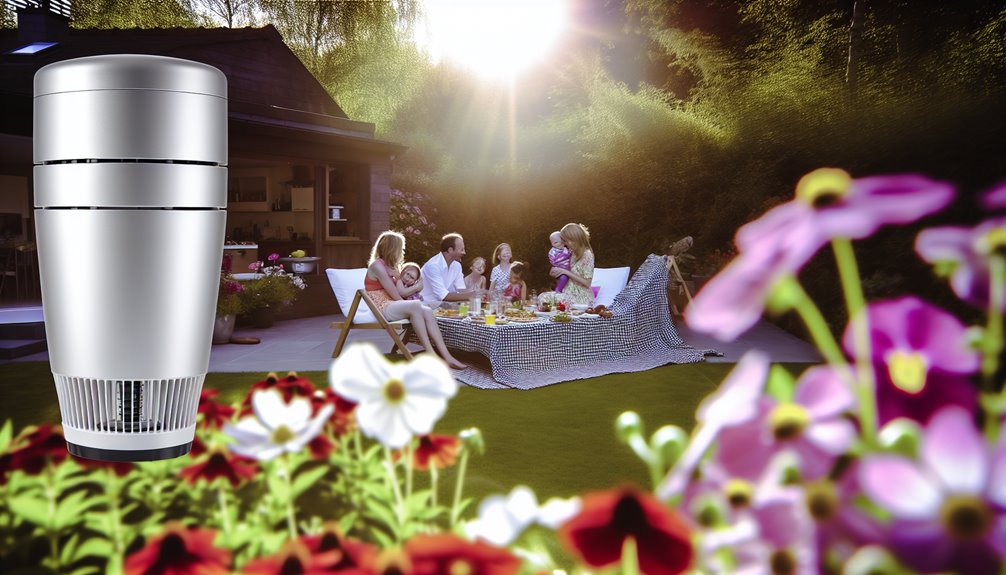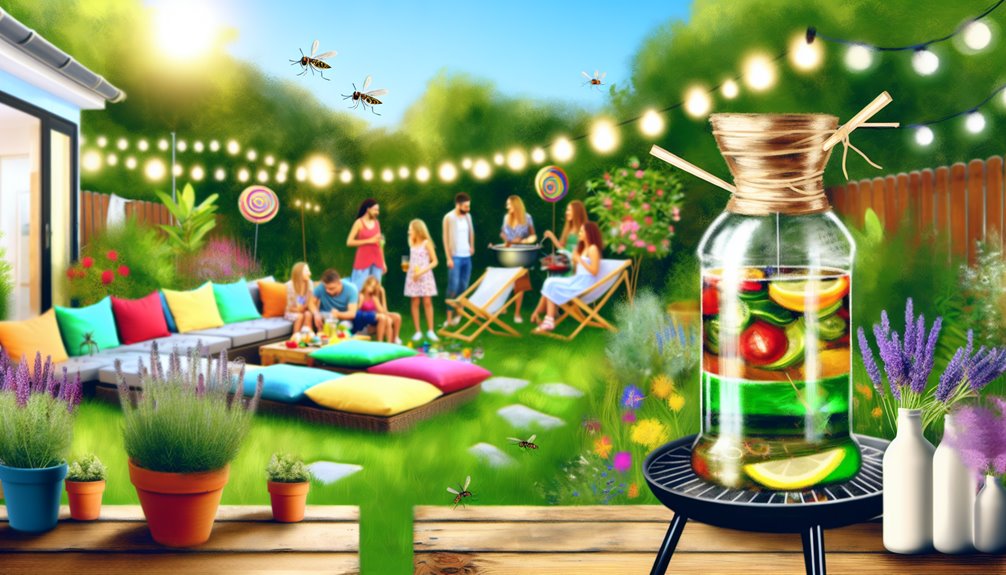When mosquitoes surge each summer, you can cut bites and reclaim your yard with targeted treatments that disrupt their life cycle and reduce adult populations. A professional plan combines larvicides for standing water, residual sprays for resting zones, and safe application timing to protect family and pets. You’ll also learn what DIY tactics help and which waste time. The result is fewer swarms and longer, bite-free evenings—but only if you address one overlooked source.
Why Mosquitoes Swarm Your Yard in Summer

Three factors usually drive summer mosquito swarms in your yard: heat, humidity, and habitat. Warm evenings accelerate mosquito behavior; females seek blood meals to produce eggs, while males patrol vegetation for nectar. High humidity slows evaporation, extending flight times and amplifying host-seeking. Standing water—gutters, birdbaths, plant saucers—supports larvae. Dense shrubs, shaded decks, and clutter create cool rest sites, matching their habitat preferences.
You can serve family and guests by auditing these conditions. Measure moisture, empty containers every three days, trim vegetation to increase airflow, and repair screens. Aim lighting away from seating. Document hotspots to prioritize weekly maintenance and protect everyone’s comfort.
How Professional Treatments Reduce Biting Populations
After you’ve minimized heat, humidity, and habitat advantages, professional services target what’s left with calibrated products and protocols that cut biting adults and future generations. Technicians map resting sites using mosquito behavior cues—shade, foliage density, and moisture—then apply residual formulations to contact surfaces and larvicides to cryptic water sources. They select actives by resistance patterns, ensuring treatment effectiveness while protecting pollinators and pets through label-driven exclusion zones and precise droplet sizes. Scheduling follows life-cycle intervals to intercept emergent waves. You get measurable reductions verified by landing-rate counts and trap data, then adjusted plans that sustain low risk for your family and guests.
DIY Options: What Works, What Doesn’t

While you can’t eliminate every mosquito on your own, you can combine proven tactics to cut bites considerably without creating new risks. Use EPA-registered repellents with DEET, picaridin, or oil of lemon eucalyptus on exposed skin; they’re effective and safe when you follow labels. Wear treated clothing (permethrin) for reliable protection. Fans disperse CO2 plumes and reduce landings. Bug zappers waste effort; they kill non-biting insects. Citronella candles offer only modest, short-range benefit. Homemade repellents with essential oils vary widely and can irritate skin; patch-test and reapply frequently. CO2 traps help small areas but require maintenance and correct placement.
Targeting Breeding Sites and Interrupting Life Cycles
Because every bite starts as standing water, you’ll cut mosquito pressure fastest by removing, treating, or excluding their aquatic nurseries. Audit weekly: buckets, gutters, tarps, plant saucers, toys, and drains. Map shade, wind protection, and organic debris—factors that shape breeding habits. Dump water, scrub biofilm, and restore flow in French drains. Where water must remain, deploy Bti/Bs larvicides per label, replace in birdbaths, and stock gambusia only where permitted. Maintain tight lids on rain barrels; install screens on overflow. Repair irrigation leaks. Thin dense vegetation near water. Track results with dip sampling; adjust intervals to sustain control using effective methods.
Creating a Protective Perimeter With Residual Sprays

Even with breeding sites under control, you can cut bites further by laying down a residual barrier where mosquitoes land and rest. Apply a labeled residual spray to shaded vegetation, fence lines, undersides of leaves, and structural eaves to create perimeter security. Calibrate your sprayer, follow PPE requirements, and observe re-entry intervals. Focus on residual effectiveness by treating surfaces mosquitoes contact between dusk and dawn. Avoid drift, protect pollinator areas, and document zones and intervals for consistent service.
- Treat dense shrubbery, woodlines, and shaded foundations
- Target underside foliage, pergolas, and fence rails
- Reinforce entry points: gates, patios, and door surrounds
Natural and Low-Toxicity Approaches for Families and Pets
Although you’ve reduced breeding and added barriers, you can further cut exposure by prioritizing natural and low-toxicity tools that protect kids, pets, and beneficial insects. Choose EPA-registered botanical actives like oil of lemon eucalyptus or IR3535; they deliver proven repellency with lower risk profiles. Apply herbal repellents correctly: cover exposed skin, reapply per label, and avoid infants under six months. Use essential oils cautiously—dilute, spot-test, and keep cats and dogs from undiluted products. Integrate fragrance-free traps and fan-driven airflow to disrupt landing. Maintain pet-safe yard practices: mow grass, prune dense foliage, and refresh birdbaths. Train volunteers on label compliance.
Layering Prevention Habits With Strategic Treatments
When you combine daily prevention with timed, targeted treatments, you cut bites dramatically while minimizing risk. Align your preventive measures—drain standing water, maintain airflow, and schedule dusk activities wisely—with products calibrated to lifecycle stages. Use larvicides for water you can’t remove, adulticides just before gatherings, and repellents on high-traffic edges. Rotate actives to protect long term effectiveness and safeguard pollinators by avoiding blooms.
- Trim dense vegetation and remove leaf litter to reduce resting sites.
- Install fan-driven airflow on patios to disrupt mosquito flight.
- Treat gutters, drains, and shady perimeters on a biweekly schedule, adjusting for rainfall and temperature patterns.
Conclusion
As the owner of Mosquito Eliminators of South MS, I truly understand the difference a mosquito-free summer can make for you and your loved ones. Imagine enjoying those long, warm evenings outside without the annoyance of buzzing insects. By taking proactive steps with our targeted treatments, you can reclaim your outdoor spaces and create lasting memories. I invite you to visit mosquitoeliminatorsms.com to learn more about how we can help you enjoy a more comfortable summer or give us a call at (601) 336-2277. Let’s work together to make your outdoor experiences relaxing and enjoyable!

